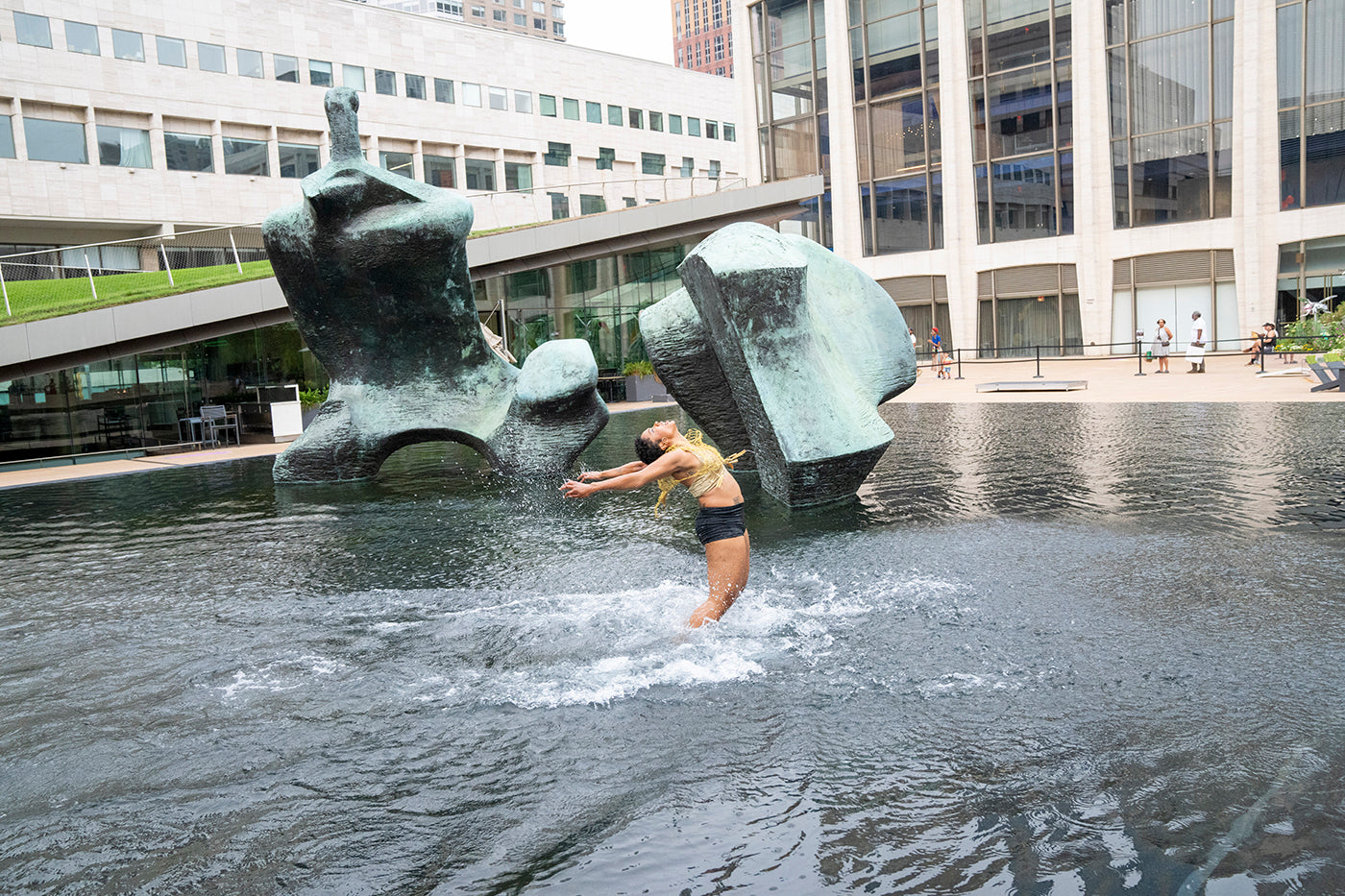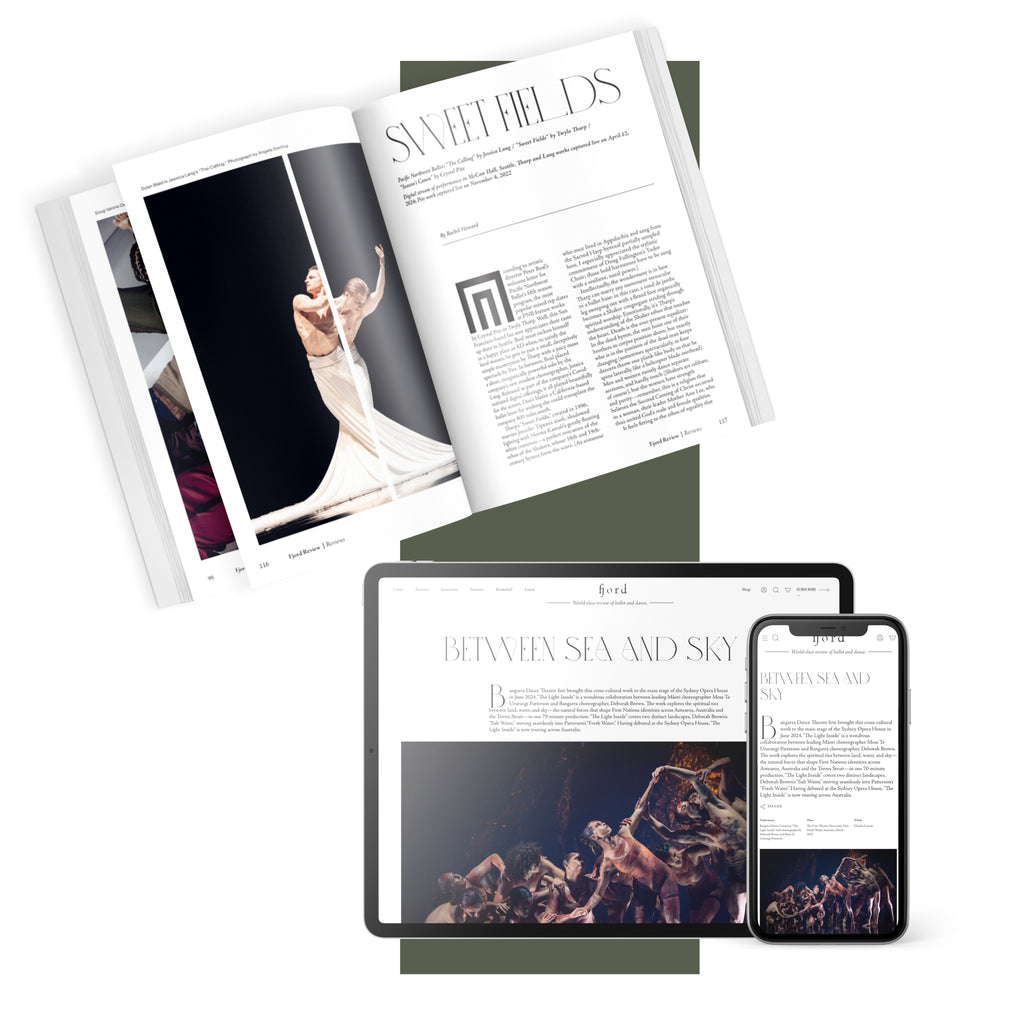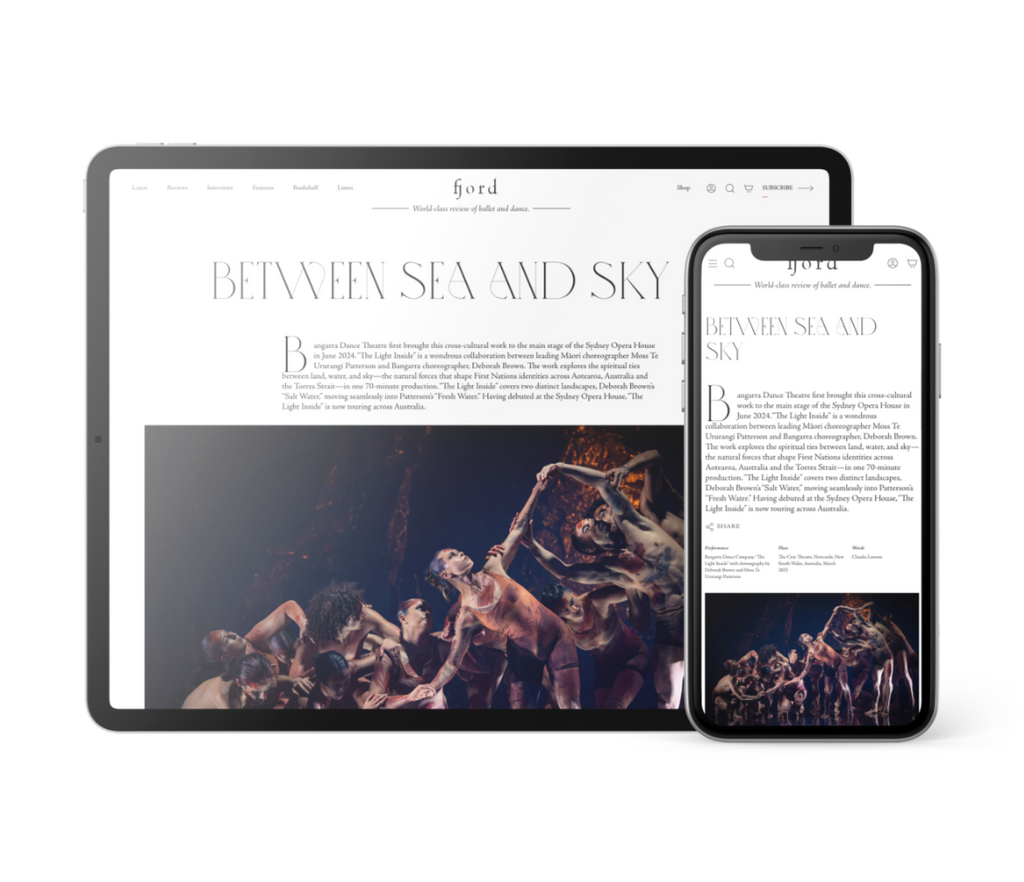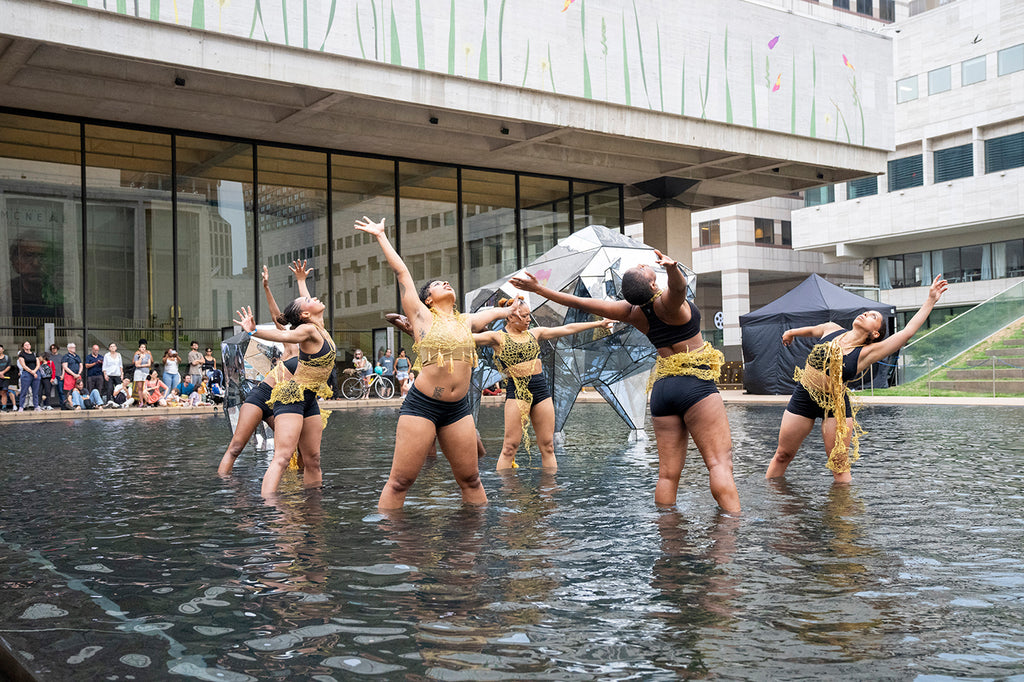Serata Forsythe
This program of three works by William Forsythe set to the music of James Blake has special meaning for La Scala Ballet.
Continue Reading
World-class review of ballet and dance.
On a sultry day like this, it might be easy to imagine we’re somewhere in the south, rather than the urban confines of Hearst Plaza, where a small group has gathered, curious about a free event. We’re not quite sure where to sit. There are café tables, a curving concrete slope that divides the space between a grove of plane trees and a very inviting reflecting pool. For now, we’re directed away from the chairs that face a small stage. As we settle in, some poetry comes through the sound system: “Gather with your folk, that is the medicine; Open your heart to the sky; Drop down, feel your essence, share your essence.” Then Lucianna Padmore takes her place behind a drumset, and Grace Galu Kalambay, picks up a guitar and begins to sing. “We got spells, spells or ways for hot flashes, for the worst cramps, for when you’re not yourself . . .”
Performance
Place
Words



“Uncommonly intelligent, substantial coverage.”
Your weekly source for world-class dance reviews, interviews, articles, and more.
Already a paid subscriber? Login

This program of three works by William Forsythe set to the music of James Blake has special meaning for La Scala Ballet.
Continue ReadingUshering in the ninth season of Dance at the Odyssey, which takes place January 8–February 16 at the Odyssey Theatre Ensemble and features a number of cutting-edge choreographers and world premieres, curator, producer and festival co-founder Barbara Müller-Wittmann adores her job.
Continue ReadingAround this time of year, we can all use a little cheer. The early darkness, the cold, the state of the world alone can send one into a spiral.
Continue ReadingWill Tuckett’s new production of the “The Nutcracker” for the National Ballet of Japan serves up a holiday feast for the senses. Sweetly invigorating, it’s also a warm toddy for the soul. From start to finish, Tuckett’s “The Nutcracker” is truly a dream.
Continue Reading
comments